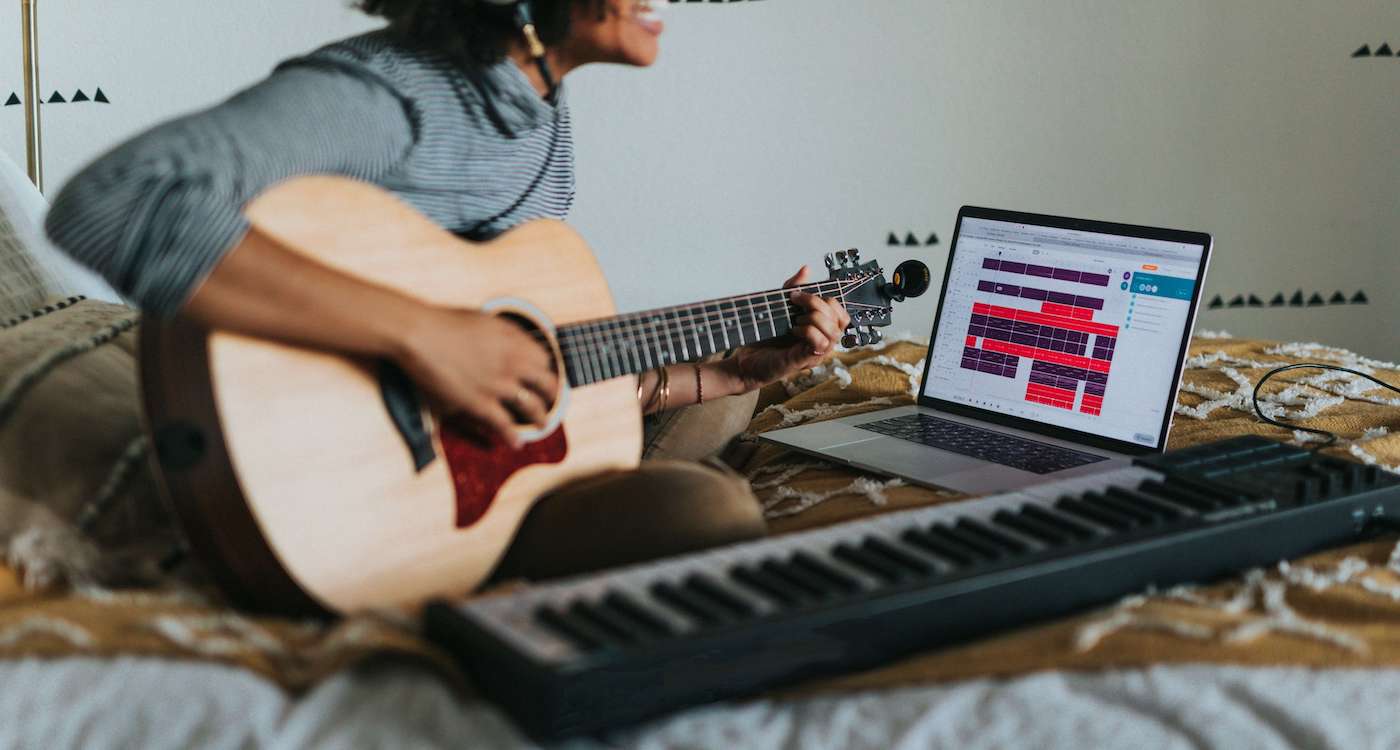
“Things” is a broad term. The concept of a Library of Things has popped up throughout the country, reflecting the growing library trend of circulating more than books and audiovisual materials. Here at Princeton Public Library, our “things” currently encompass technology kits, hiking backpacks and emergency preparedness tools–with more to come. Adapting to community needs and interests, the Library of Things encourages learning and sharing of resources.
I’ve been experimenting with the various gadgets, and the one I’ve enjoyed the most is the Computer Media Kit. The kit contains a webcam, microphone and Lume Cube for digital content creation. Potential uses include recording podcasts, attending telemedicine appointments, joining virtual family gatherings, livestreaming and teaching remotely.
In this new era of eLearning, the Computer Media Kit has vastly improved my experience of virtual music lessons. For a little over a half year, I’ve been studying the guqin (古琴), a 4000-year-old zither. It was a challenge to find a local teacher, so I’ve been taking regular lessons with a teacher in New York State. What would have been three hours of driving one-way is now abbreviated into one hour of preparation: dragging myself forcefully out of bed, rolling into clothes, cramming breakfast while doing some last-minute practicing and, finally, clicking a Google Meet link. Then, the lesson begins.
I relish tweaking the Logitech webcam and accompanying tripod to find the best angle for broadcasting my performance. Usually, I leave my laptop right in front of me, so I can watch my teacher. Then, I situate the webcam on the farthest corner of my desk to capture the nearly four-foot horizontal instrument in frame. There is a free Logitech G Hub app to customize zoom, focus and exposure. The difference in video quality between my hazy laptop webcam and the Logitech webcam is striking. Additionally, between lessons, I’ve used the Rode microphone to record videos of my practice to send to my teacher. The kit includes USB adapters that easily hook up both the webcam and the microphone to Macbook Thunderbolt ports.
With all these tools, my performance and dexterity–or lack thereof–are on open display. This transparency is ideal so my teacher can get a full picture of my learning progress. When I send recordings, she can pause, replay moments and screenshot to mark any technical errors. The microphone picks up a crisper sound, which allows her to provide accurate feedback. Since guqin is a fretless string instrument that incorporates subtleties of hand gestures and nuances of pitch, every bit of visual and auditory information becomes a part of the performance. I feel more confident as an online student with the library’s resources at hand.
To try the kit out for yourself, place a hold or visit the first-floor Checkout Desk at the library.
Photo by Soundtrap on Unsplash
Blog post by Tiffany Fang.
